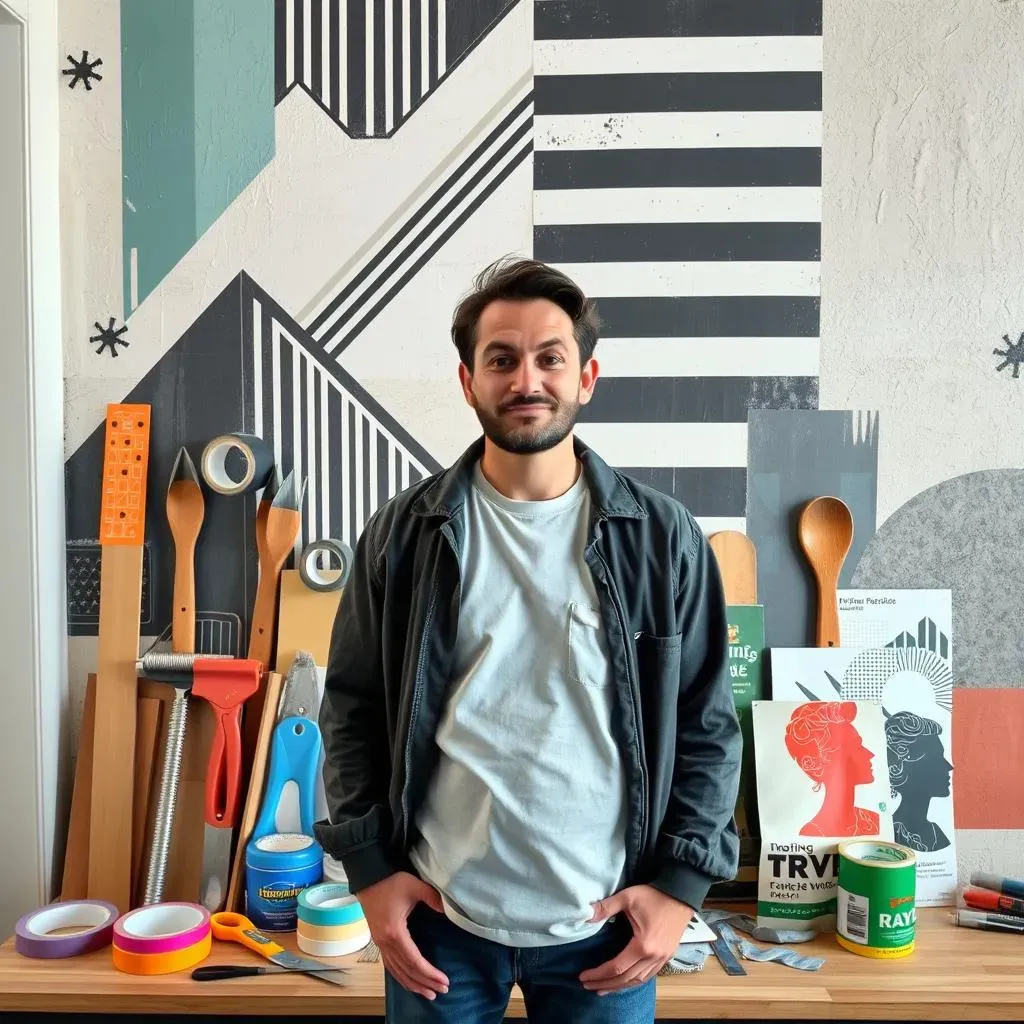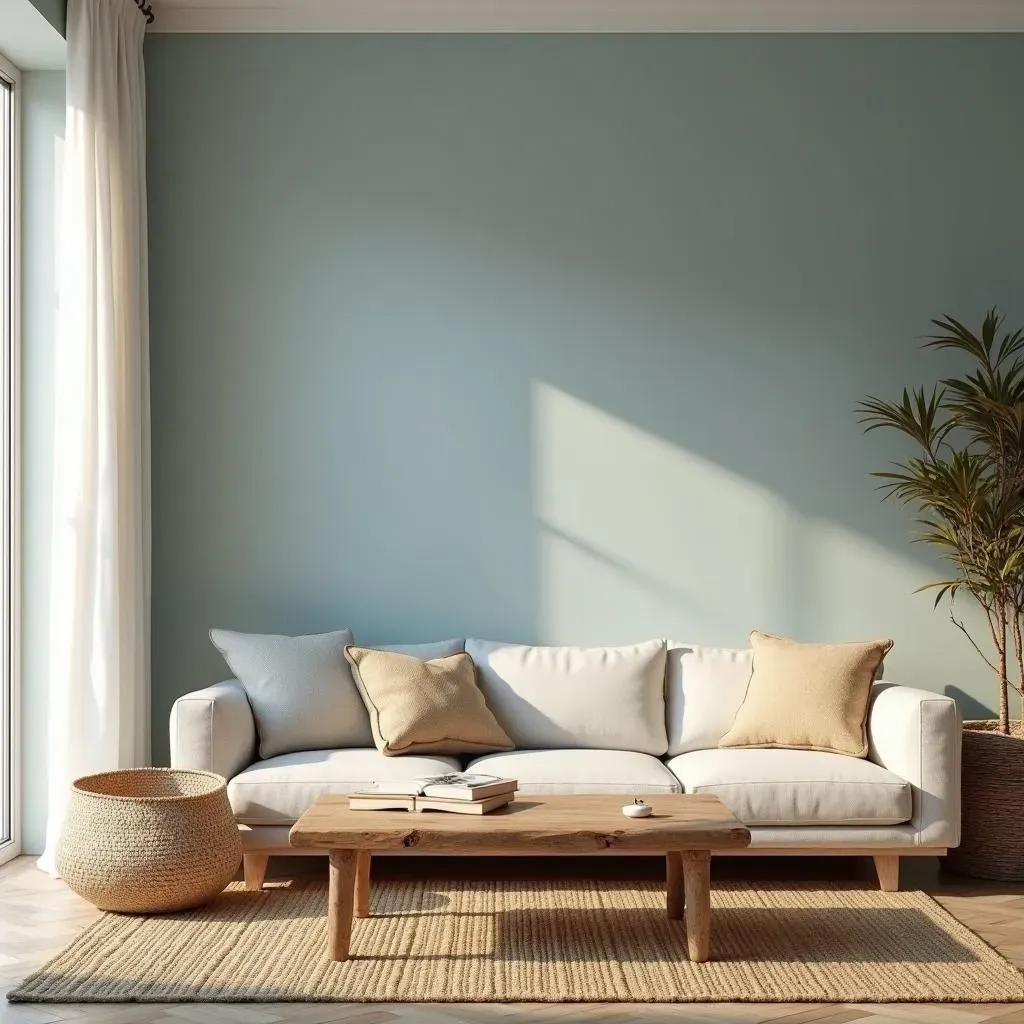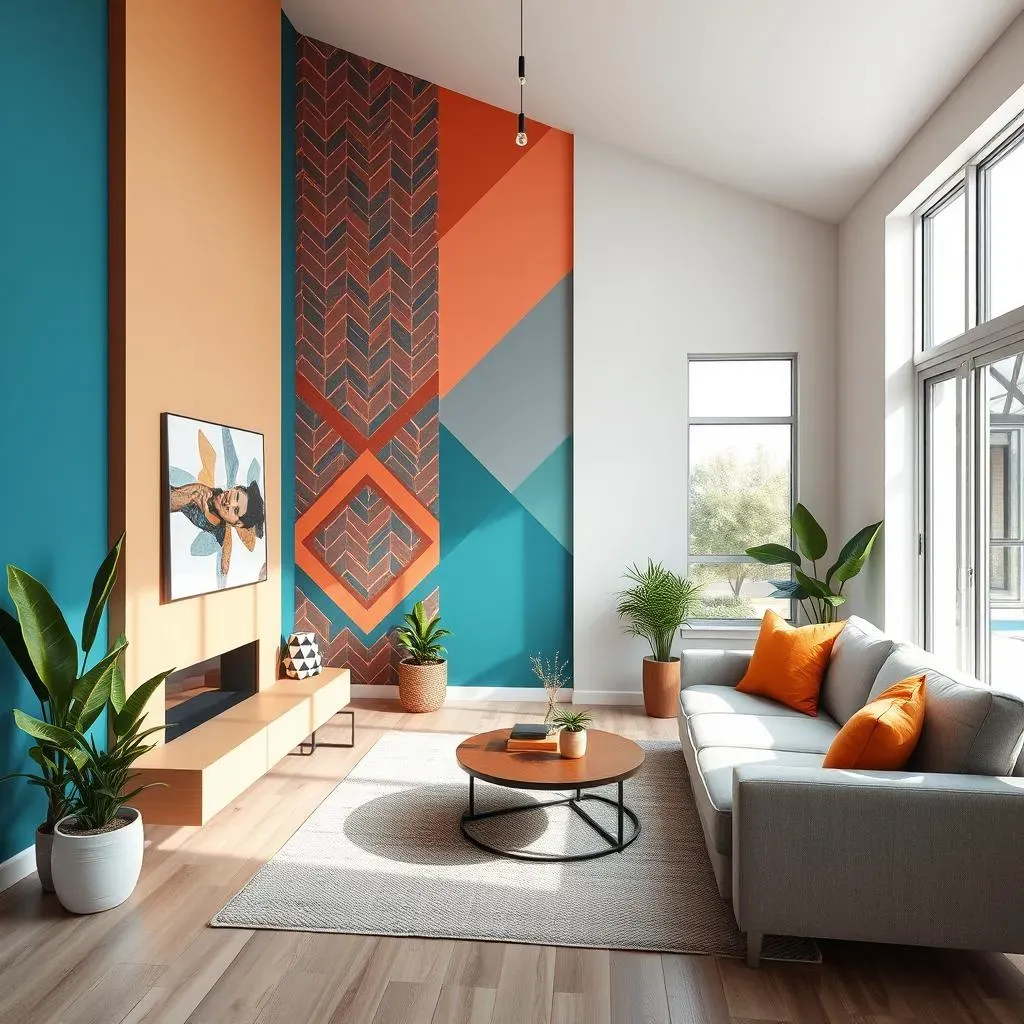Table of Contents
Tired of staring at the same old boring walls? I get it. You're craving a change, something that screams "you" without needing a full-blown renovation. That's where the magic of accent walls comes in, and we're not talking about just slapping on a different color. We're diving headfirst into the world of accent wall paint pattern ideas that can seriously transform any room. Think of it like this: your walls are a blank canvas, and today, we're going to give them a serious upgrade. We'll explore everything from bold geometric designs that make a statement to subtle textures that add depth and warmth. We'll also get into some easy DIY techniques so you can create these looks without breaking the bank. So, buckle up, grab your paintbrushes, and let's get ready to turn those plain walls into works of art. Get ready to find the perfect accent wall paint pattern ideas for your space, whether it's your bedroom, living room, or even that awkward hallway. Let's do this!
Bold Stripes and Geometric Accent Wall Paint Pattern Ideas

Bold Stripes and Geometric Accent Wall Paint Pattern Ideas
Stripes: Classic with a Twist
Let's kick things off with stripes, shall we? They're like the little black dress of wall patterns – always in style and surprisingly versatile. Now, I'm not talking about those boring, basic stripes you see in every other house. We're talking bold, wide stripes that command attention, or maybe some skinny, pinstripe action that adds a touch of sophistication. Think vertical stripes to make your ceilings look higher or horizontal ones to make a room feel wider. And don’t even get me started on color combos – black and white for a dramatic effect, or maybe some pastel shades for a softer vibe. The possibilities are endless, honestly.
And here's a little secret: stripes are super easy to pull off. All you need is some painter's tape, a level, and a steady hand. Okay, maybe a little patience too. But trust me, the payoff is huge. You can transform a dull wall into something that's both visually striking and incredibly chic. I remember when I first tried this in my living room – I went with bold navy and white stripes, and it instantly made the space feel bigger and more modern. It's like the room got a shot of espresso!
Stripe Style | Best For | Difficulty |
|---|---|---|
Wide Vertical Stripes | Making ceilings appear taller | Easy |
Thin Horizontal Stripes | Making rooms appear wider | Easy |
Diagonal Stripes | Adding a modern and dynamic feel | Medium |
Geometric Patterns: Bold and Modern
Now, if stripes are the classic, then geometric patterns are the cool, edgy cousin. We're talking triangles, hexagons, chevrons, and all sorts of other shapes that can add a serious dose of modern style to your walls. Geometric patterns are fantastic because they can be as subtle or as in-your-face as you want them to be. You can go for a minimalist approach with a simple repeated pattern or get wild with a complex, multi-colored design. The key here is to have fun and experiment with what feels right for your space.
I once saw a bedroom with a wall covered in a geometric pattern that looked like a mountain range, and it was absolutely breathtaking. It made the room feel so unique and full of personality. Geometric patterns can also be a great way to play with color and create visual interest. Don't be afraid to mix different shades and tones to really make your walls pop. It might seem intimidating at first, but with a little planning and some painter's tape, you can achieve some seriously stunning results.
NatureInspired and Textured Accent Wall Paint Pattern Ideas

NatureInspired and Textured Accent Wall Paint Pattern Ideas
Bringing the Outdoors In
Okay, so maybe you're not into the whole super-modern vibe. Maybe you're more of a "let's bring nature inside" kind of person. Well, good news, there are tons of ways to use paint to create a nature-inspired accent wall. Think about soft, flowing patterns that mimic the look of leaves or branches. You could even try a watercolor effect to give your walls a dreamy, organic feel. I once saw a living room with a wall painted to look like a forest, and it was absolutely magical. It felt like stepping into a tranquil escape, right in the middle of the city.
Another cool idea is to use stencils to create patterns that resemble natural textures like wood grain or stone. It's an awesome way to add depth and visual interest without going too overboard. And don't forget about colors! Opt for earthy tones like greens, browns, and blues to really capture that natural essence. You can even play with different shades and gradients to create a more dynamic and realistic effect. It's all about creating a space that feels calming and connected to the natural world. It's like giving your room a big, refreshing hug from Mother Nature.
Nature-Inspired Pattern | Color Palette | Feeling |
|---|---|---|
Leafy Patterns | Greens, browns, yellows | Tranquil and calming |
Watercolor Effect | Pastel shades, soft blues | Dreamy and organic |
Wood Grain | Browns, tans, creams | Rustic and warm |
Texture: It's Not Just About Color
Now, let's talk about texture, because your walls don't have to be flat and boring. You can create some seriously cool effects with textured paint, and it's not as complicated as it sounds. Think about using a sponge or a rag to create a stippled or mottled look. It's like giving your walls a subtle, tactile dimension. Or, you could try using a textured roller to create patterns that add depth and visual interest. I remember helping my friend paint her bedroom, and we used a textured roller to create a subtle damask pattern. It made the room feel so much more luxurious and inviting.
Another fantastic option is to use a technique called "color washing," where you apply layers of diluted paint to create a soft, textured finish. It's a great way to add warmth and character to any space. And don't be afraid to experiment with different materials and techniques. You can even try using a trowel to create a plaster-like effect, or adding sand to your paint for a more gritty texture. The possibilities are endless, and the results can be truly stunning. It's all about adding that extra layer of depth and dimension that makes your walls stand out from the crowd. It's like giving your walls a personality of their own.
DIY Techniques for Unique Accent Wall Paint Pattern Ideas

DIY Techniques for Unique Accent Wall Paint Pattern Ideas
Tape It Up: Creating Sharp Lines and Designs
Alright, let's talk about the magic of painter's tape. Seriously, this stuff is a DIYer's best friend when it comes to creating unique accent wall paint pattern ideas. It's not just for stripes, you know. You can use it to create all sorts of geometric shapes, chevrons, and even more complex designs. The key is to make sure your tape is firmly pressed down to avoid any paint bleeding. I like to use a credit card or a putty knife to really get those edges sealed. And remember to wait for the paint to dry completely before you peel off the tape. It's like unwrapping a present, and seeing those crisp, clean lines is so satisfying.
I've seen people create amazing patterns using just tape and paint. One time, a friend of mine used different widths of tape to create a pattern that looked like a barcode on their wall. It was so unique and modern. You can also try layering different colors and patterns by taping off sections and painting them separately. It's all about experimenting and having fun with it. Don't be afraid to try something new and see what you can create. You might just surprise yourself with what you're able to achieve. It's like being an artist, but with walls instead of a canvas.
Technique | Best For | Tips |
|---|---|---|
Straight Lines | Stripes, geometric shapes | Use a level, press tape firmly |
Layered Patterns | Complex designs, multiple colors | Let paint dry completely between layers |
Random Shapes | Abstract art, unique patterns | Have fun, don't be afraid to experiment |
Stencils: Easy Patterns, Professional Look
Now, if you're not super confident with freehand painting, stencils are your secret weapon. They're perfect for creating repeating patterns or intricate designs without needing to be a professional artist. You can find stencils in all sorts of shapes and styles, from floral motifs to geometric patterns. You can even create your own stencils using cardboard or plastic sheets. The process is simple: just tape the stencil to your wall, apply your paint with a brush or a sponge, and then carefully remove the stencil. It's like magic, and the results are always impressive.
I remember when I first tried using stencils, I was amazed at how easy it was to create a professional-looking pattern. I used a simple floral stencil to create a border around my bedroom wall, and it added such a touch of elegance to the space. It's a great way to add visual interest to a room without having to spend a lot of money or time. And you can use stencils to create all sorts of different effects, from subtle patterns to bold, eye-catching designs. It's all about finding the right stencils and colors that match your style and personality. It's like having a cheat code to amazing wall art.
Sponging and Rag Rolling: Adding Texture and Depth
Okay, let's get a little messy, shall we? Sponging and rag rolling are fantastic techniques for adding texture and depth to your walls. It's all about using unconventional tools to create unique and interesting patterns. For sponging, you just dip a natural sponge into your paint and then gently dab it onto your wall. You can use different colors and apply them in layers to create a really interesting effect. Rag rolling is similar, but instead of a sponge, you use a rolled-up rag to apply the paint. It gives your walls a soft, mottled look that's both subtle and beautiful.
I once helped a friend create a textured wall using the rag rolling technique, and it was so much fun. We used different shades of blue and green to create a look that resembled a cloudy sky, and it was absolutely stunning. It's a great way to add character and personality to a room without being too precise or perfect. And don't be afraid to experiment with different colors and techniques. The beauty of sponging and rag rolling is that they're very forgiving, and you can always adjust the pattern as you go. It's like creating art with your hands, and the results are always unique and one-of-a-kind. It's like giving your walls a personality of their own.
Choosing the Right Colors and Patterns for Your Accent Wall

Choosing the Right Colors and Patterns for Your Accent Wall
Finding Your Perfect Palette
Okay, so you've got all these amazing accent wall paint pattern ideas swirling around in your head, but how do you actually choose the right colors and patterns for your space? It's like picking out the perfect outfit – you need to consider the occasion, your personal style, and what makes you feel good. First things first, think about the mood you want to create. Do you want a space that's calming and serene, or something that's bold and energetic? Colors have a huge impact on how a room feels, so choose wisely. Lighter colors can make a room feel more spacious, while darker colors can create a cozy and intimate vibe. And don't be afraid to play with contrast. A dark accent wall can look amazing against a light-colored room, or vice versa.
Now, let's talk patterns. Your pattern should complement the overall style of your room. If you have a lot of busy furniture or decor, you might want to go with a simpler pattern or a solid color. But if your room is more minimalist, you can have more fun with bold patterns and textures. And don't forget to consider the size of the room. Smaller patterns can make a small room feel cluttered, while larger patterns can overwhelm a small space. It's all about finding the right balance. I once saw a living room with a bold geometric pattern on the accent wall, and it was way too much for the space. It made the room feel smaller and more chaotic. But another time, I saw a bedroom with a soft, watercolor effect on the accent wall, and it was absolutely dreamy. So, it's really about finding what works for your specific space and style.
Mood | Color Palette | Pattern Style |
|---|---|---|
Calming | Soft blues, greens, grays | Subtle textures, simple patterns |
Energetic | Bold reds, yellows, oranges | Geometric shapes, stripes |
Sophisticated | Neutrals, metallics, deep jewel tones | Abstract designs, damask patterns |
Considering the Room's Function and Light
It's also crucial to think about the function of the room when choosing your colors and patterns. A bedroom, for example, should be a calming and restful space. So you might want to opt for softer colors and patterns. A living room, on the other hand, is often a more social space. You might want to go with bolder colors and patterns that reflect your personality. And don't forget about the lighting in the room. Natural light can make colors look different than artificial light. So you might want to test out a few different paint samples in different lighting conditions before making a final decision. It's like trying on clothes under different lighting – what looks great in one light might not look so great in another.
I remember when I was choosing colors for my office. I went with a bright yellow, thinking it would make the space feel more energetic. But it turned out to be way too overwhelming under the bright office lights. I ended up having to repaint the wall in a much softer shade of blue. It's all about thinking about how the space is used and how the colors and patterns will interact with the lighting. It’s like creating a stage set, you want everything to work together to create the right atmosphere. So, don't rush into anything, take your time, and choose colors and patterns that you truly love and that work well for your space. Trust me, it's worth it in the end.
